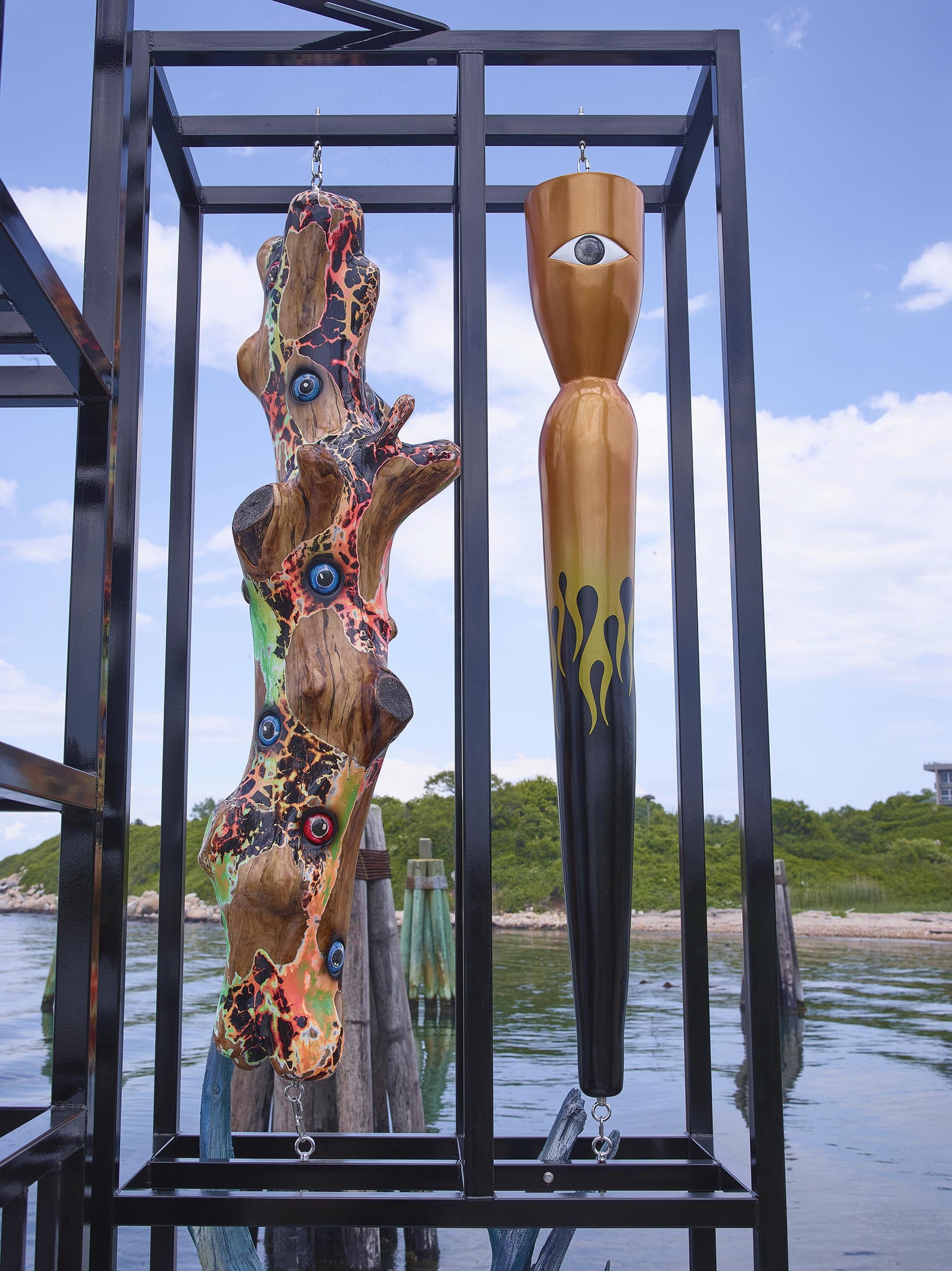
See the Forest for the Sea
2024
120" x 134" x 128"
Fallen timber (oak, walnut, cedar, sycamore, birch, cherry, pine, and ash trees), acrylic urethane paint, epoxy resin, inkjet print on photo paper, steel
Commissioned by and currently on view at Lighthouse Works. The project received an additional funding from the Foundation for Contemporary Arts. Photo credit: Merik Goma













See the Forest for the Sea – is a modular sculpture that contends with the tenets of lure fishing, specifically the ways in which fishing lures act as a conduit between natural and built worlds. Lure fishing is an intimate interplay between species, an attempt at understanding the sentience of the natural world. The process depends on tension, manipulation and attraction. The installation questions what kind of consciousness is on the end of an angler’s line.
Made with steel, the work resembles a vertical multi-tiered tackle box. Within it, individual compartments function as framing devices, each containing sculptures that derive inspiration from the concept and design of lures. The piece is dynamic in the sense that, while anchored, some of its “lures” are suspended, and can catch light, ocean spray, and dance in the wind. As one approaches Fishers Island via ferry, the tiers of the “tackle box” align: the sculpture appear to open and close. Ultimately, it elicit visitors’ desires to approach these highly tactile, luminous sculptures. Like a shrine, the “tackle box,” contains relics that showcase our evolving relationship with nature.
The majority of these “lures” are constructed from salvaged lumber – trees felled by natural disasters as well as by humans, sourced locally over time. Taking a collaborative approach with nature, Fukuyama preserved the already existing unique characteristics of the wood, treating the raw and untouched part with clear marine guard epoxy resin to maximize longevity. The remainder was shaved, carved, and sanded, coated with layers of urethane paint to create luster and to enhance durability. Some “lures” parts aremade from metal (abstracted swivel, spinner, hooks, etc). Some are adorned with “eyespots” to evoke nature’s mimicry, challenging our perspectives on our ecosystem, examining what and who constitutes prey.
Altogether, the sculpture elicit impulses of attraction, challenging the psychology behind our consumerist desires and tendencies towards ownership, while conveying the importance of trees as anthropological implements. In resuscitating fallen timber and placing it by the sea, Fukuyama mourns our changing environment, but also celebrate the resilience of nature, presenting “lures” as symbols of the reciprocal relationship between land and water, nature and humans. Forests and seas, afterall, function as the “lungs” of the Earth, aiding its lifecycle. These “lures,” which evoke amphibious life, comment on our evolutionary pathway from (and potentially back to) water. See The Forest For The Sea aims to explore the paradoxical notion of how human intellect can upset nature’s equilibrium, but at the same time assist nature’s longevity.
Like a literal tackle box, the installation is a menagerie that contains many interrelated sculptures and notions alongside one another.